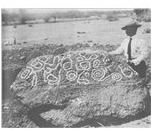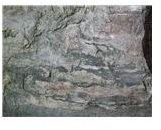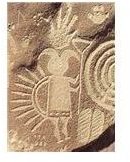Assigning a Student Project on Native American Indian Pictorial Language
A Picture Is Worth 1,000 Words
Long before the shelves of the library in Alexandria were filled with written text, Native peoples of the Americas were drawing (pictographs) and
carving (petroglyphs) the stories of their lives on canyon walls, stone and leather. Native American Indian pictorial language used symbols to represent words. A bird flying is exactly that. Strung together, the pictures tell a story. Researchers note that some stories are accounts of daily life while others have yet to be deciphered.
Today Native pictorial language found in pictographs and petroglyphs are viewed as art. Many of the symbols used by the First Peoples can be found adorning jewelry, rugs, paintings and even t-shirts.
Objective for Teaching Pictorial Language
Native American Indian pictorial language can be introduced to students in a variety of subject areas. In science, they can be discussed as

part of a unit on geology or archaeology. History offers the opportunity to view pictographs/petroglyphs through the lens of Native American culture or historic conservation/preservation. Art and language arts can be joined to introduce native rock art to elementary students as a means to inform their literacy as well as develop creative skills. Pictures came before words; therefore, students can tell stories using pictures they draw.
To this end, the main objectives of any of these classes would be:
- to introduce students of Native American pictorial language.
- to develop in students an awareness of the need to protect and preserve ancient pictographs.
- to have students observe, analyze, synthesize information.
- to have students create their own interpretation of pictorial language.
Project
Regardless of which subject area this unit is taught in, students can all finish with the same project, which is to create a book or story sheet

using pictographs.
- Introduce Native American pictographs/petroglyphs to the students. Supply books, slides, posters and other media to show the various types of symbols found throughout the Americas.
- Discuss where ancient pictographs/petroglyphs are typically found and the reasons for protecting these ancient writings.
- Point out reoccurring symbols such as the sun, rivers, moon and animals.
- Create a list of the various places similar symbols appear.
- Discuss how Native Peoples in North America might use the same symbols as the Native Peoples of South America.
- Have students keep a log of various reoccurring symbols they find in their studies. This will be used as a reference for when they create their books/story sheets.
- Give students an example of a complete Native American pictorial story. (This can be found online at various sites.) Have them translate it to the best of their ability.
- Have students create their own story using the symbols they have pulled from their studies. This can take the form of a traditional book or as a sheet of paper that is edged to look like old leather.
- Allow time for students to share their stories with discussion and Q&A time.
- Display students’ work in the classroom or throughout the school.
Modifications
This lesson plan can be modified for younger students by creating simple pictograph cutouts, such as a sun, moon, horse, house, etc., that

they can then color and paste onto a page to tell a story. Once they are done, allow them to tell their classmates what their story says. No two will be exactly alike.
For use in an English as a Second Language class, this project will help students learn vocabulary as well as practice speaking and listening. Have students create pictographs for words in their vocabulary list that they are studying, and then create a story. Have the students take turns reading their stories.
This is also an excellent project for using with gifted students. In addition to the work above, have the students pick a favorite children’s story. Ask them to rewrite the story using pictographs. They can use pictographs found in their studies or create their own. They will need to provide an glossary of the symbols at the end of their story.
Assessment
Students in all subject areas will be assessed on:
- Participation in the class
- Ability to illustrate their understanding of the subject through the development of their project
- Ability to discuss and share the knowledge gained
- Ability to identify common symbols used by Native Peoples
Before Written Words
Native American Indian pictorial language existed long before the written word. It is not a dead language in that representations of the symbols used by Native Peoples can still be found in art, on subway walls and in public places. Teaching students about pictorial language found in Native petroglyphs and pictographs gives them a glimpse at the roots of the written word.
References
- Los Alerces National Park Petroglyph by Gagea under Public domain on Wikimedia Commons
- Dinetah Rock by Timthefinn under Public domain on Wikimedia Commons
- Petroglyphs.us: What is Rock Art?
- Sand Carved Designs, Southwest Decor Petroglyphs
- Esperanza Stone by Charles Frederick Holder under Public domain on Wikimedia Commons
- Pictograph by Utahcamera under Public domain on Wikimedia Commons
- Native American Language Net: Setting the Record Straight About Native Languages
